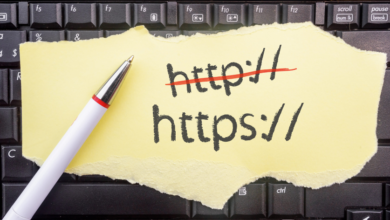https://acortaz.eu/la-utilidad-de-ipv4-guia-completa/

IPv4, or Internet Protocol version 4, is an integral part of how the Internet works. It is a communications protocol that allows computers to communicate over a network. This guide will provide an in-depth exploration of IPv4 and its associated functions, technologies, and applications. It will provide a comprehensive overview of what IPv4 is, how it works, and why it is an essential part of the Internet. In addition, it will provide practical advice on how to use IPv4 and identify potential issues.
Understanding IPv4
A. What is IPv4?
IPv4 is the fourth version of the Internet Protocol, the primary protocol used for communication on the Internet. It is a connectionless, packet-switched protocol that is designed to route traffic over a network. IPv4 is a 32-bit address, which means it can have a maximum of 232 (4,294,967,296) unique addresses. Each device on the Internet is assigned a unique IPv4 address, which allows it to communicate with other devices on the network.
B. How Does IPv4 Work?
IPv4 works by breaking up data into small packets and sending them over the network to their destination. Each packet is labeled with the source and destination addresses, and the router in each hop along the way reads the address and forwards the packet to the next router in the route. This process is known as packet switching. The packets can take different routes, and they are reassembled at the destination.
C. Benefits of IPv4
IPv4 has several benefits over other protocols. It is reliable, efficient, and secure. Additionally, it is scalable, which means it can support a large number of devices and networks without affecting performance. It is also easy to configure and manage, making it an ideal solution for large networks.
IPv4 Technologies
A. Network Address Translation (NAT)
Network Address Translation (NAT) is a technology that allows multiple devices to use a single public IP address. It works by translating the internal IP addresses of the devices to a single public IP address. This allows multiple devices to access the Internet without the need for a unique public IP address.
B. Dynamic Host Configuration Protocol (DHCP)
Dynamic Host Configuration Protocol (DHCP) is a protocol that allows devices on a network to automatically obtain IP addresses and other configuration settings. It is used to configure devices on the network, such as assigning IP addresses, setting up subnets, and configuring DNS servers.
C. Internet Control Message Protocol (ICMP)
Internet Control Message Protocol (ICMP) is a protocol used to test the reachability of a device on the network. It is used to test the connection between two devices, as well as to detect errors in the network. It is an essential part of network troubleshooting.
D. Domain Name System (DNS)
Domain Name System (DNS) is a protocol used to translate domain names into IP addresses. It is an essential part of the Internet, as it allows users to access websites using an easy-to-remember domain name instead of the IP address.
IPv4 Applications
A. Network Security
IPv4 is an integral part of network security. It is used to identify malicious traffic, prevent unauthorized access, and restrict the flow of traffic. It is also used to detect and block malicious traffic, such as viruses and malware.
B. Network Management
IPv4 is used to manage networks, such as configuring IP addresses, setting up subnets, and monitoring network performance. It also allows for remote access to networks, which is useful for troubleshooting and maintenance.
C. VoIP and Video Conferencing
IPv4 is used for voice over IP (VoIP) and video conferencing. It is used to provide a secure connection between two or more devices, allowing for real-time audio and video communication.
D. Internet of Things (IoT)
The Internet of Things (IoT) is a network of connected devices. IPv4 is used to provide connectivity to these devices, allowing them to communicate with each other and the Internet.
Using IPv4
A. Setting Up an IPv4 Network
Setting up an IPv4 network requires a few steps. First, the network should be divided into subnets, which will allow for more efficient routing of traffic. Then, an IP address should be assigned to each device on the network. Finally, DNS servers should be configured to allow for the translation of domain names into IP addresses.
B. Troubleshooting IPv4 Networks
When troubleshooting an IPv4 network, it is important to identify the source of the problem. This can be done using tools such as ping and traceroute to test the reachability of devices on the network. Additionally, network monitoring tools can be used to identify potential issues in the network.
Conclusion:
IPv4 is an integral part of how the Internet works. This guide has provided a comprehensive overview of IPv4, its associated technologies, applications, and how to use it. It has outlined the benefits of IPv4, as well as how to set up and troubleshoot an IPv4 network. IPv4 is an essential part of the Internet, and understanding how it works is key to ensuring reliable and secure communication.




